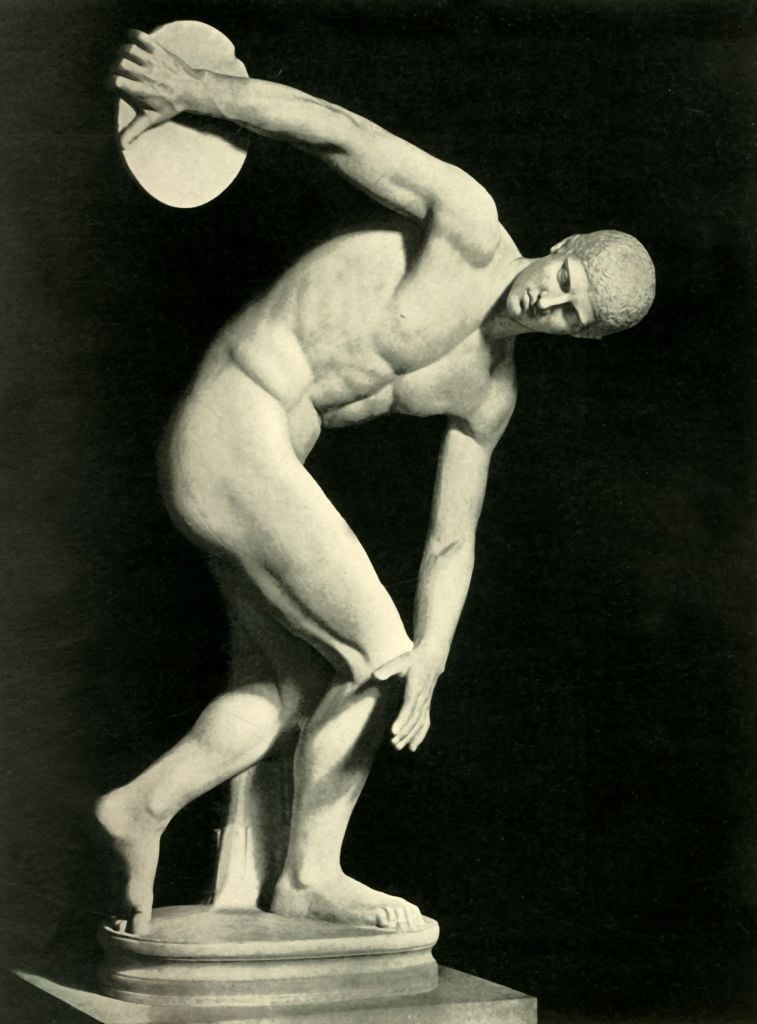Museums & Institutions
Italy Is Rebuffing a German Museum’s Demands That It Return an Ancient Roman Sculpture
The sculpture was sold to Germany for 5 million lira in 1938.

The sculpture was sold to Germany for 5 million lira in 1938.

Adam Schrader

Italian Culture Minister Gennaro Sangiuliano has said that the Discobolus Lancellotti, a sculpture bought by Adolf Hitler and returned to Italy after World War II, should not be returned to Germany as it is a national treasure, amid a diplomatic dispute over who is the rightful owner of the statue.
The statue is perhaps the best-known copy of a bronze sculpture by Athenian artist Myron made between 460–450 B.C. The original is now lost, but the copy is believed to have been made between 100-200 A.D. At least five other copies are known to have been made over time.
Sangiuliano’s comments came after the National Roman Museum director Stéphan Verger requested that a marble base for the statue, created in the 1600s, be returned from the collection of the Staatliche Antikensammlungen, the Italian newspaper Corriere della Sera reported.
But Florian S. Knauss, the director of the Glyptothek, the section of the Staatliche Antikensammlungen that houses Greek and Roman antiquities, instead allegedly then asked Italy to return the statue, according to Corriere della Sera.
The work was found in 1781 on the Esquiline Hill, one of the seven hills of Rome, and sold to Nazi Germany in 1938 for 5 million lira (about $5.7 million when adjusted for inflation) with the support of Benito Mussolini, the Italian dictator and founder of fascism. It was given by Hitler to a museum in Munich and displayed there until November 1948, when it was returned to Italy.
“The request from the Munich Glyptothek to have the Discobolus Lancellotti back is as absurd as it is inadmissible,” Sangiuliano said in a statement on Twitter. “It was tied up and was exported illicitly as a result of an unholy pact between the Nazis and fascists. Thanks to the Americans for giving it back to us.”
Sangiuliano also suggested his German counterpart, culture minister Claudia Roth, “knows nothing about this,” and that the conflict could be resolved at a diplomatic level.
“And I am sure that the cooperation between Germany and Italy, which is already excellent in so many fields, will improve even more in the future in the cultural field as well,” Sangiuliano said. Still, Germany “must go over my dead body” to get the sculpture back, he added.
The Italian newspaper called the standoff a “risky chapter” for Italy and Germany, noting that discussing the sculpture highlights the “tragic relationship between fascism and Nazism.”
“I am not in a position to abandon our legal claim of a return of the Discobolus to our museum,” Knauss said in his response. “The sculpture was legally acquired by the German state after being offered to the Metropolitan Museum in New York. The Italian institutions in power at the time agreed to the export.”
More Trending Stories:
Art Critic Jerry Saltz Gets Into an Online Skirmish With A.I. Superstar Refik Anadol
The Old Masters of Comedy: See the Hidden Jokes in 5 Dutch Artworks
A Royal Portrait by Diego Velázquez Heads to Auction for the First Time in Half a Century
How Do You Make $191,000 From a $4 Painting? You Don’t
In Her L.A. Debut, South Korean Artist Guimi You Taps Into the Sublimity of Everyday Life
Two Rare Paintings by Sienese Master Pietro Lorenzetti Come to Light After a Century in Obscurity